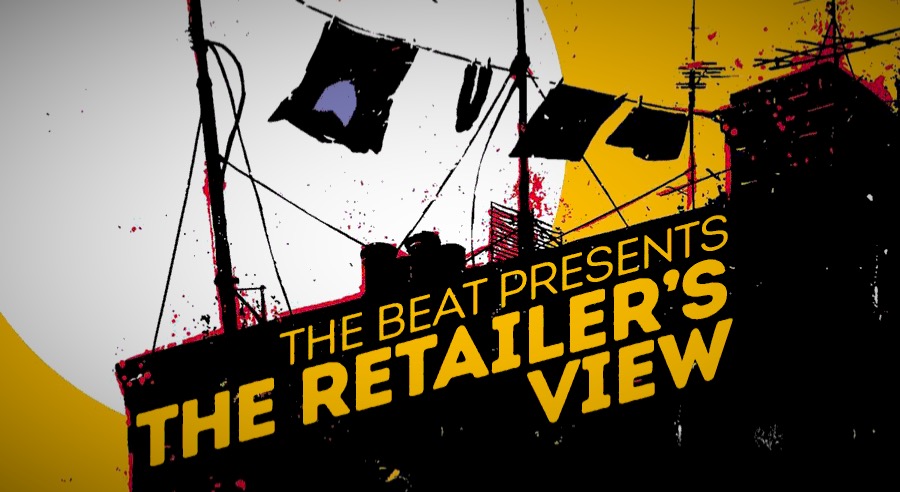
By Brandon Schatz, with edits and contributions by Danica LeBlanc
Welcome back to the death throes of the direct market. This one is going to get a little bumpy as we dig into the problems with the twenty page serialized comic and how it is doomed in the current market place. But first, some usual bits.
As is the case with every Coronavirus Journal, what I’m about to present exists as a chronicle of specific circumstance, and the experience of someone who has been working within this fine industry for over thirteen years. Much of this was scribbled into one of my journals and has been reproduced here with embellishments for the sake of context.
This is also intended to be specific to the comic book industry. There are absolutely larger problems out there and the fate of this form of entertainment is infinitesimal compared to those issues. Other people are more equipped to talk about those larger issues, and as always, I suggest you seek out The Worst Year Ever podcast, as they are doing fine work in this field.
Now, let’s try and save a format, shall we?
In the late afternoon, Marvel dropped a bombshell on comic news sites.
As True Believers await the return of new Marvel comics later this month, fans everywhere will now be able to start diving back into some of their favorite Marvel series next week! On May 13th and May 20th, Marvel will release a select number of brand-new digital-only comics for fans to enjoy as everyone continues to practice social distancing.
Over the next two weeks, new issues for series such as ANT-MAN, GHOST-SPIDER, HAWKEYE: FREEFALL, and more will be made available digitally for readers to access from their own homes. These comics will only be available as digital comics for the time being; however, they will be available in print collections later this year for fans looking to add them to their Marvel bookshelves. More information about these comics will be shared at a later date.
The news of the company pushing some digital only content wasn’t entirely surprising. Given the uncertainty of the world, something was going to break, and low selling books were going to be an issue. Last week, Matthew Rosenberg opened up about the situation on Twitter, talking about how the options for Hawkeye: Freefall #5 & 6 were “digital release”, or “nothing at all”. The Coronavirus changed the company’s immediate needs and Marvel came up with a solution. Like all solutions in this era, it was something they could live with today, to get them to tomorrow.
I didn’t have a problem with the fact that they were letting a series finish its story. My issues came from two places:
1) The company did not communicate this change in publication status directly to retailers (and still hasn’t).
2) While the company noted the digital issues would “be available in print collections later this year”, they offered no recourse for customers who might see this as forcing a double-dip purchase.
Neither of these issues were terribly surprising, given Marvel’s track record. That didn’t stop me from sending a communication to Marvel’s Senior Vice President of Print, Marketing and Sales, David Gabriel, who has been fairly helpful in the past. I suggested that Marvel allow the books that will not be finishing in print singles to be made returnable in order to help alleviate feelings of alienation with the customer base. Barring that, I asked for confirmation of whether or not such a thing would be possible so that I could have official information to pass along to customers. This went unanswered.
We started formulating our own solution to this problem.
A little over a week later, DC announced that a pair of their own books would be serialized in a digital only format: Supergirl and The Terrifics. The first place I saw this was on Newsarama. Confirmation from a DC rep came shortly afterwards and communication directly to retailers via a mass e-mail happened after that. They too promised a future collection that would contain the unprinted issues, but did not offer a system of returnability for the rest of the issues covered in the collection that would have been already purchased by a customer.
At this point, with both companies dropping books from their print line, we began to take a closer look at the things we’d discovered since the Coronavirus shut down the distribution of single issues back in March.
First, we considered the fact that Diamond’s shut down was probably the best thing that could have happened to our store during this time. We still had access to graphic novels from a wide variety of publishers (including Marvel and DC) and were still getting in new products from other distributors. Despite not being able to let people into our store, we were in better shape than we’d been in since we opened the shop over five years ago.
This caused us to look at our numbers for the past year, wherein we discovered that if single issues stopped coming out, we would be fine. Despite ordering extremely tight for shelf in the past, single issues turned out to be a fair burden for our relatively young shop, and not the engine that kept things running. That was quite an eye opener – but in hindsight, it made a lot of sense.
You’ll often see other retailers talking about how slim the margins are in this industry. Many of them will point directly to the single issue format as being nearly impossible to make money at. They’ll even go so far as to say that single issues are “perishable goods” like groceries. If they’re not purchased and consumed in short measure, they moulder and become unsellable.
Add to that the fact that the two biggest single issue publishers had started to look at certain titles as unviable for serialized print publication, the question becomes clear: does this type of product seem like a good idea to hinge a business on?
Second, we thought about the viability of Diamond in general. With one of their biggest customers actively seeking alternative methods of distribution (and for good reason), what did this mean for the company? It had been showing signs of weakness for well over a decade at this point, and the Coronavirus brought it down. Diamond had to stop paying publishers while it couldn’t do the “distribution” part of “Diamond Comics Distributors Inc.” While they had announced a comeback date (complete with owner Steve Geppi odiously pushing the idea of “pandemic era collectibles”), they didn’t seem to have a plan for when the second wave of the virus hits. Would they shut down again? What would that mean for publishers and retailers already in trouble and banking on product for their customers?
We considered all of these questions. We also took into account that DC seemed to be trying figure out a way to get around another potential shut down by seeking out alternative distribution methods of their own.
Their choices ended up being companies owned by Discount Comic Book Service and Midtown Comics, the two biggest mail order distributors in the direct market. What did it say that the best options DC could find to get their single issue product to stores were their fellow shops?
All of these questions pointed us in the direction of something pretty serious: the twenty page comic is not long for this world. The profits don’t work. The only distributor who wants to carry and distribute them couldn’t figure out a way to stay open and get them to shops. There’s nearly a 100% chance that – despite this “comeback” – that will be the case again soon enough. Nobody else wants to distribute them, and only comic stores really want them.
None of this is good.
Yes, our store’s numbers tell us that we can survive without a single issue product line – but that is far from the norm. Many stores need single issues to continue if they’re going to survive, and the format doesn’t have a lot going for it. So, what’s the solution?
Change the format.
The way that I see it, the current single issue format has a few key problems.
1) It has become a perishable object, nearly useless to shops that still have copies on the shelf within the month (at the latest).
2) The print format is not the best primary delivery method for serialized content – not when you have the technology to get that content out digitally in a relative instant than the months long process of solicitation and printing allow.
3) Only one distributor seems to want to carry the format, and that distributor is on a fair bit of thin ice.
4) Other distributors like Penguin Random House (who distributes DC’s graphic novels) don’t want to carry single issues for the same reason the format disappeared from newsstands ages ago: the product has a low cost relative to magazines that could pull in more money while taking up the same amount of space, and they are flimsy and easily damaged.
5) Very few characters can sell a book based off of character recognition alone, and in a world where DC and Marvel are having to push titles to digital only to meet their needs, this could be problematic for the development of new characters, or new ideas for old ones.
What I’m going to propose is a solution that addresses each point, potentially allowing for a monthly serialized format of some kind to continue having a presence within the industry, even if Diamond collapses.
First off, I want to note that a lot of my “new format” and content delivery musings will be heavily focused on Marvel and DC. There are several reasons for this, but the tl;dr of it all comes down to the fact that those two companies carry the bulk of the water in the direct market – chewing up to 75% of the market share alone. Plying this analysis to small companies can, and will be done in greater detail at some point, but would be another column entirely – and this one is going to be long enough as it is.
So.
A solution for the monthly periodical needs to solve several problems all at once. To do this, we’re going to have to fundamentally change a few standards to the delivery system of new content, and a lot of that change isn’t going to sit well. In my mind, looking at what the single issue is up against, this is a case of “do or die”. We can have something that resembles the monthly format we all know and love, or we could have nothing at all.
The format I’m thinking of is a hybrid of 2000AD and Shonan Jump. The idea would be to take a character like Batman, and have them anchor the book, just like Judge Dredd does for 2000AD. Each and every month, Batman would come out and would clock in at a hefty 80 pages. Given my druthers, it would also be sized up to roughly a golden age size, with a spine that has the title of the comic, and the issue number on it.
In each issue of this 80 page Batman title, you would have your main Batman story, by the big creators of the moment. That story would run anywhere from 16-30+ pages, however many are needed to complete that serialized “chapter” of the story. In the rest of the issue, you would find rotating features such as Nightwing and Batgirl and the like – or maybe even a couple more stories starring Batman himself. The idea would be to use Batman to sell a base level of comics, while providing the means for other characters to get stories told in a manner that is cost effective. This would also do away with what are essentially fill-in runs or stories for smaller characters, who would only appear when there was a solid story to latch on to, and then cycle out until the next big idea or follow-up is ready for them.
The result would be content that would always matter – which is important when you’re trying to get people to care about the world that you’re building and living in. What’s more, this format could be used to get bigger, deadline challenged creators to craft content that could be slotted in as completed, adding some marque talent into a handsome package of comics. The comic itself would cost probably $7.99 – a bargain for the amount of comics you would get, in comparison to the current $3.99 floppy – and the spine and larger format would give the object a greater sense of permanence.
With a higher price point, and a more durable product, distribution points open up across different channels, solving a huge potential issue in having Diamond as the singular valve point. The content itself would lead to better graphic novels that would create a stronger line across the brand.
Now, something in this format wouldn’t do too well digitally. One of the biggest disconnects with digital content has always been how the price point doesn’t seem to be “worth” the cost when the physical counterpart is available for the same price. Attempting to sell a monthly book at $7.99 a pop probably wouldn’t float to well. My solution to that problem would be twofold:
1) All the content available in each 80 page issue of Batman would be available digitally, a la carté style. You’d basically be able to pick and choose the stories that you want to your taste, and every morsel would be either 99 cents or $1.99.
2) All of the content would also be available digitally first.
While having big, important superhero plot points happen in the digital realm first is causing many of you to have heart palpitations, I honestly can’t see a down side to it. After all, digital is the best way to deliver upon surprise. Without the long production time and solicitation cycle required to get content out in a physical manner, you open up a world of storytelling possibilities. You can end an issue of Avengers with a huge reveal and then announce that Empyre will be arriving in two short weeks. You can ride that immediate shock and push through something big with a quick boil, rather than a long simmer that overcooks the whole thing over the course of months. You could truly bring a sense of wonder and discovery to the serialized superhero narrative that’s been missing for quite some time, and that excitement would carry over to people who are hearing about these big moments, and want to have those moments in their hands.
Suddenly, you’re ordering physical content knowing exactly what to expect in terms of content, with an audience who will make the noise and sell the books for you. That type of excitement and delivery method would probably end up raising the sales of everything across the board, from digital to “single issues”, to graphic novels alike. It would also keep the universes running with the ability to showcase characters, ideas and talent that might not get traction otherwise, and produces a format that’s far more palatable for other distributors to carry.
Running a format like this would allow for the best of many worlds. While folks have often accused me of tossing out babies with bathwater when I talk about the death of the direct market, I have never advocated for an eradication for the sake of destruction. If anything, I’ve been asking retailers to think critically about their current position and areas of support and anger. How can you sit around for years… DECADES even… and yell about terrible profit margins, floundering sales and broken systems only to turn around and advocate for a retention of the status quo?
THINGS WEREN’T WORKING. They aren’t any better now, and they won’t be getting better soon. We’re staring down the barrel of a long term pandemic, one that is nearing the end of its first wave, and preparing for a second one that stands a chance to be even worse than the first.
WE NEED TO HAVE BETTER STRUCTURES AND BETTER PRODUCTS. We need to look at what has been working – truly working – in the past few years and build towards it. Embrace new technologies and use them to our advantage to connect people with story, regardless of format.
In the end, the only thing I know for sure is that there will be no easy solutions to be found to the problems in the direct market. Thankfully, the industry is so much bigger than that – and the folks who are not only willing to change, but to fight for something better, are going to be fine. But if you’re all going to keep trying to pretend like Diamond is going to save us by (checks notes) not changing a damn thing, then you deserve the death you have coming.
We’ll end this entry just like the ones that came before, with a note:
I will not be reading any comments on this article, nor will I be responding to any social media contact regarding it outside of “thanks for reading”, if that response suits. This is more for personal time and sanity reasons, so y’all just… talk amongst yourselves.
EDIT: Danica has reminded me that, as before, she’ll reply to folks about this, and previous articles.
(That said, folks who have my proper contact info are always welcome to drop a line. I may or may not respond with anything beyond “thanks for reading”, but you can try.)
We’ll talk with you all soon.


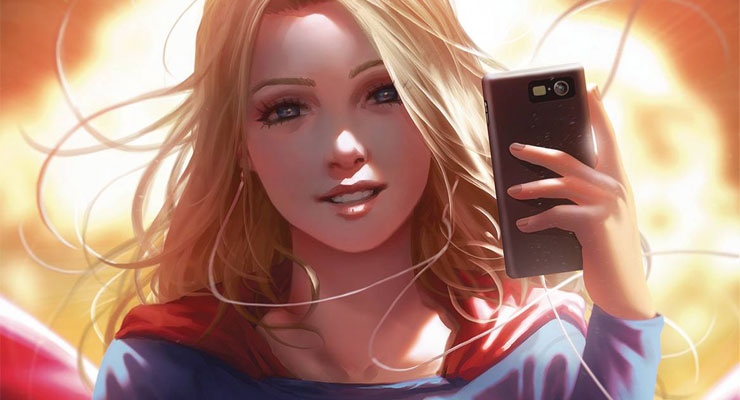
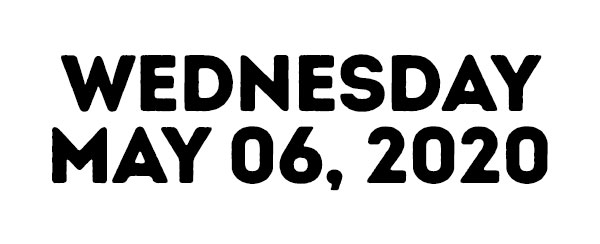
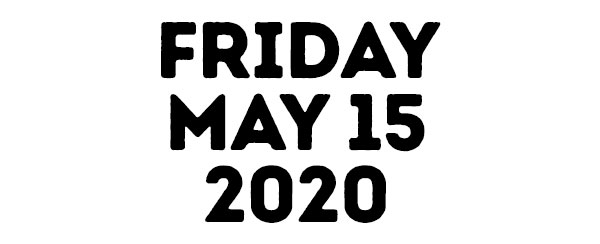

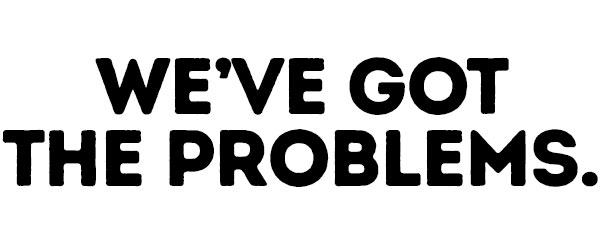
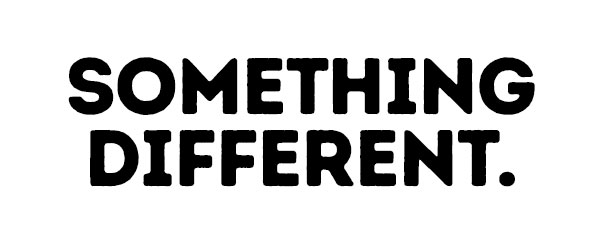





One tiny problem, tho..
Anthology books haven’t sold well in the US since the 1970s. People don’t want to pay more for a book which may only have one story they are interested in.
And what about the characters whose sales aren’t strong enough to “anchor” a book? Their fans will be forced to buy a “franchise” title just to get the stories they want, even if it is only 8 pages.
Not surprised by Marvel’s actions. It’s similar to movie studios bypassing theaters and releasing some movies on streaming services. Of course, they’re holding back the potential blockbusters, which are virtually all expensive franchise films (Black Widow, Wonder Woman 84, Fast and Furious, etc).
RE: Anthology books not selling. They don’t sell when there are other alternatives. If that is the ONLY way to get the content (in print), then that changes the paradigm.
“People don’t want to pay more for a book which may only have one story they are interested in.”
Maybe people should read all the stories in an anthology, as I always did. Expand your horizons and discover new characters, writers, artists, etc. You’re actually getting more for your money — though if someone only cares about Batman, they may not see it that way.
Sales would drop in print, and separate digital sales of at least some of the backup material would be embarrassingly low. What’s more likely to develop is a two-tier system in which the “prestige” stuff gets print publication, while lesser characters, failed miniseries and general odds and ends are straight to digital.
“Maybe people should read all the stories in an anthology”
Agreed. For us Europeans, anthologies have been 99% of the periodicals market for almost a century. THEN, the quality stuff would be warranted Album treatment (TPB/ HC for you).
1/ it’s way cheaper than floppies
2/ you get to discover stuff that you would not have been exposed to otherwise
3/ it’s a way better business model for retailers
“For us Europeans, anthologies have been 99% of the periodicals market for almost a century.”
Serious question, not meant to be snarky: can you describe this periodicals market a little better? Because from 10 minutes of googling, my initial conclusion is there is no meaningful Euro periodical market to speak of (except for the UK)
I am deeply afraid that Nate has the right of it: the US market simply hasn’t shown any interest in Anthology comics (I would, largely, put it to the tradition of American Individualism, and how our commuter culture is largely based on getting in cars and driving alone for an hour, rather than mass transit) in decades, and I would suspect that recent entertainment trends of narrow-focusing every fandom would only have multiplied that impulse since then.
But the idea of “Batman-ga” isn’t exactly new — variants of the concept have been pitched for more than 15 years, to my certain knowledge; maybe it’s the time to try the idea…. but I think there are less than 10 properties/families that it could possibly succeed for.
-B
I tend to think that the reason the single-issue format works now, to the extent that it does, is that it’s the “first format” — it’s where the shock of the new happens, it’s where you go to get the new stuff, the latest development. If you don’t care about reading this stuff first, you can wait for the TPBs, which are more convenient for the long term.
So if you transfer that “shock of the new/first format” aspect to digital (which currently shares that with print but doesn’t own it), you’re incentivizing all those “shock of the new” readers to switch to digital, and making those print anthologies merely the first “collected” format. And rather than buy those, the reader who’s willing to wait can wait for the actual TPBs.
I think a good anthology comic would be, aesthetically, a delight. But if it’s not the first format, if it’s not the “new” — then I think you’d divide readers into people who wanted the new, and would get it digitally because it’s the only option for that first format, for the online discussion, for the thrill of surfing the new stories, and people who could wait, and would wait for the book editions.
I don’t think many of them would go for the anthologies as an acceptable compromise.
Apart from Archie’s digests and certain magazines, Nate is correct that multi-subject anthologies have rarely worked in North America, at least since comics dropped below 48 pages. On the practical side, their asking prices are higher, they’re more prone to damage, and the aftermarket has generally had little use for them.
If one’s position is that periodical comics aren’t and shouldn’t be collectibles, that last bit wouldn’t matter — but there are retailers who trade in that business and understand how to profit from it, and so their buy-in would need to be considered alongside that of Diamond and all the publishers.
Which brings us to this: If the requirement for anthologies’ success is what Glenn says — that there be no other alternatives — remember that there are dozens of firms in the single-issue space, including many that focus heavily on them. They are likely to fill that vacuum, just as Marvel absorbed nearly every rack space DC and Image left empty when they pared back in late 2018-early 2019.
Beyond all the practicalities and market needs, though, I tend to think the North American consumer simply is directed toward buying exactly what’s wanted and nothing that isn’t. Variety shows were dying on television even before cable came along and gave people more options: there’s just little desire to sit through a vaudeville revue to see the one act you care about. Consumers want what they want, and precious little of anything they didn’t ask for.
“can you describe this periodicals market”
Sure, I suggest you go to comixology or Izneo and browse through an issue of Spirou (Weekly mag), Fluide Glacial (monthly) for example that should give you an idea. spirou’s been around since the 1930s and does not show any sign of stopping, FG since the 70s. There are dozens of anthology titles on the stands, not only from french properties (Lanfeust Mag and many others) but also italian (Tex), Disney (Picsou Magazine, Le Journal de Mickey, Mickey Parade), Panini publishes a handful of those regrouping Marvel series, Urban Comics does the same for DC properties, etc… I could go on like this, in a wide variety of formats. And everything is also available in digital of course. Oh I almost forgot Metal Hurlant of course, which is coming back every once in a while.
Sure there are a few single-content titles on the stands but that is definitely not the majority.
Scope out Action Weekly from the 1980s. This anthology experiment advocated, already tried, failed to garner a steady readership.
“I tend to think that the reason the single-issue format works now, to the extent that it does, is that it’s the “first format”…”
That’s a fair way of looking at it, Kurt. Format-wise, I would agree. Now, Brandon and I may disagree on this, but for me it’s a scheduling incentive. I would rather have customers come in more often, then wait for the trade. Obviously, this is their prerogative.
Stores need something more frequent. This fact won’t change. A larger format would be more appealing, especially for the dollar amount. It’s hard to justify $5 for 20 pages.
My hope is that by keeping a weekly, bi-weekly, or monthly title released in that timely manner, and then the separate stories/characters released in their own collected editions down the line, folks will continue their habit of visiting their LCS.
Oooh, retailer Ryan Higgins just said you don’t know what you are talking about on Twitter. That wasn’t very nice of him. Hey, wasn’t he the guy who e-begged for donations to move his store? Guess he’s not such the savvy businessman he thinks he is….
They should switch to a Good/Better/Best model
Good: cheap digital
Better: physical copies, slightly more expensive than digital, but basic covers no variants, nothing fancy. Maybe even do the anthology model.
Best: more expensive than regular issues (now), exclusive variants, higher quality, any gimmick that the Big Two can think of. Maybe more content. You have a captive audience with collectors might as well beat that dying horse into the ground.
The good and best tiers are the profit drivers. The middle is basically to keep mindshare for people who expect comics in the format they are used to.
So instead of monthly periodical comics you want to release … bi monthly periodical comics? Quarterly? I don’t see how that expands readership
“I don’t see how that expands readership”.
If I am tracking the points in the article correctly, a thick anthology expands readership by being a product more likely to be sold in non-LCSes.
Part of the article laid out how the current “floppy” format dropped out of favor with book/magazine retailers. The description of the imagined anthology book format, several paragraphs later, seemed to address the issues enumerated earlier.
I’m really not the target audience here, since I’ve been buying almost exclusively digital since my collection was wiped out in a flood. But the idea that “people will buy anthologies if there’s no alternative” ignores the fact that there IS an alternative… don’t buy the comic.
I honestly don’t believe the industry, as it stands, is big enough to support the shift to an anthology model. You would need to “retrain” the readership, and there isn’t time.
(Heck, even Weekly Shonen Jump, the biggest manga magazine in Japan, was unable to maintain a print presence in the US, and that indeed was the “first format”, as Kurt put it. It went from print anthology, to a digital anthology, to weekly digital chapters for a nominal fee. (Essentially, webcomics).
I can’t say whether it’s profitable or a loss-leader, though.
Comments are closed.